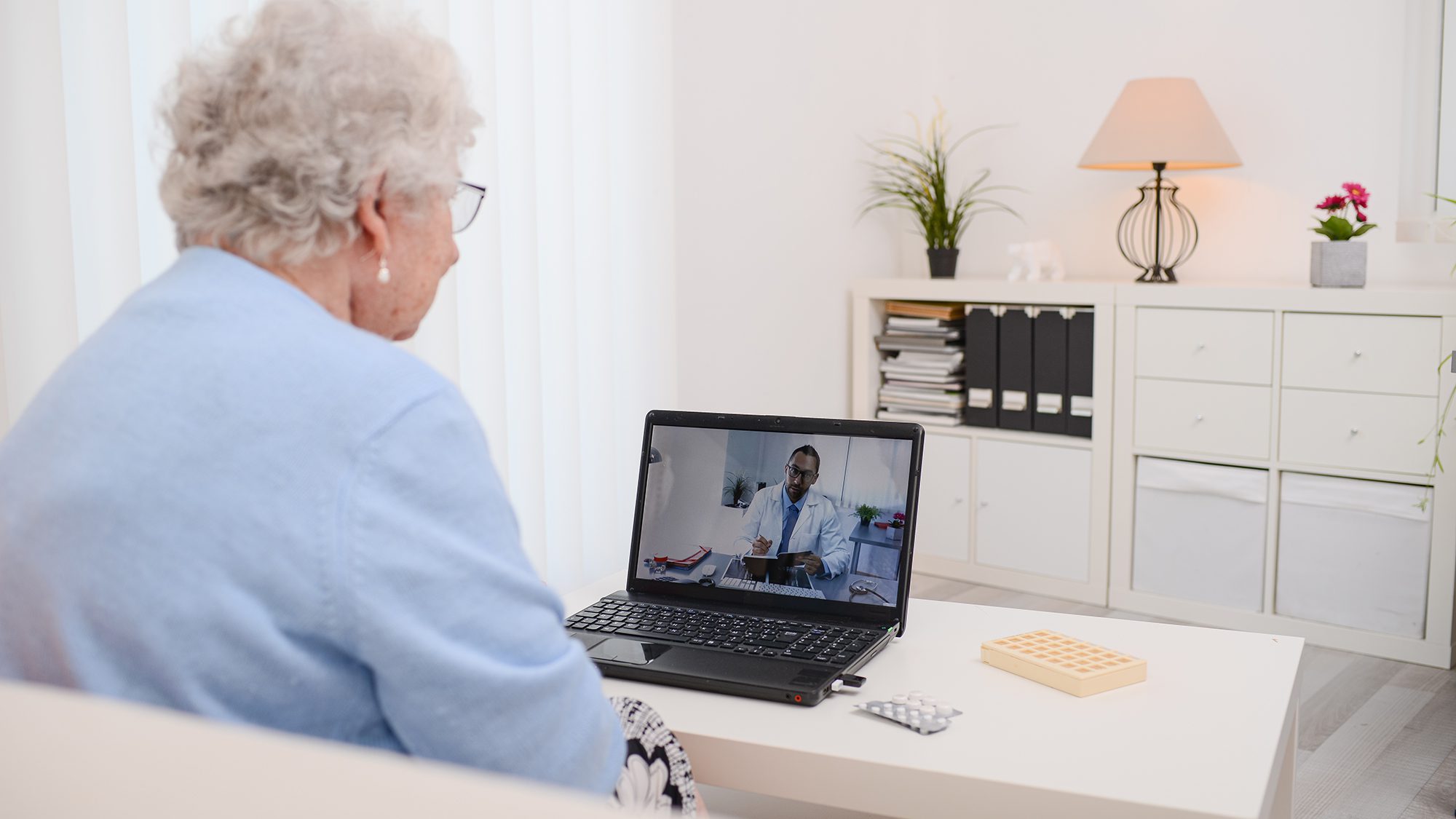Amid pandemic, new interest in telemedicine

As the coronavirus increasingly confines people to their homes, there is growing interest in telemedicine as an alternative to visiting a doctor’s office, urgent care or emergency room.
Susan Ybarra, director of institute operations for Furman’s Institute for the Advancement of Community Health, said area patients now have to wait for telemedicine visits.
“The wait time alone would indicate there’s an increase in use,” she said.
The biggest current use of telemedicine – whether via email, telephone or video – is in high-risk populations.

Susan Ybarra ’92, director of institute operations for Furman’s Institute for the Advancement of Community Health.
“It is providing a way for patients to get medical care while they stay at home, which lessens their chance of exposure,” Ybarra said. “They can use it if they show symptoms of COVID-19 or for chronic conditions they may have.”
Populations who are high risk for severe illness from COVID-19 include people 65 and over, people who live in a nursing home or long-term care facility, and people with underlying medical conditions. Those medical conditions include chronic respiratory disease, asthma, cardiovascular disease, obesity, diabetes, chronic kidney disease, liver disease, and conditions that cause people to be immunocompromised.
Ybarra said that the federal government changed Medicare guidelines on March 6 to allow anybody on Medicare to use telemedicine for a visit with their healthcare professional. Before that, Medicare only paid for telemedicine in certain circumstances, typically patients who lived in rural settings.
Telemedicine has been available for decades. But before the pandemic, it wasn’t used widely. According to a survey conducted by J.D. Power in July 2019, only one in 10 patients in the United States had used telemedicine to make a virtual visit.
Hospital systems in the Upstate offer free virtual visits to patients who think they may have COVID-19. For other conditions, telemedicine visits are often less expensive than a doctor’s office or urgent care visit. It’s also responsive to patient experiences, which is why patients who use telemedicine are encouraged to provide feedback so clinicians can improve the process.
While some telemedicine visits consist of video chats where the doctor and patient can see and talk to each other, others are a simple phone call with a primary care physician. Doctors may also send patients to a secure online portal where they answer questions to determine whether their concern is treatable through a telemedicine visit. If it can, the patient responds to a series of questions. A medical professional reviews the answers and can prescribe medications and order tests. If they cannot treat the condition via telemedicine, they instruct the patient to seek medical care.
“There are limits to what telemedicine can do,” Ybarra said.
Ybarra said that while she hopes that telemedicine will become a more regular component of the medical system, it likely will depend on whether insurance covers it.
“I would hope that as insurance companies, clinicians and patients gain more confidence in telemedicine, we would see more widely accepted use of it.”